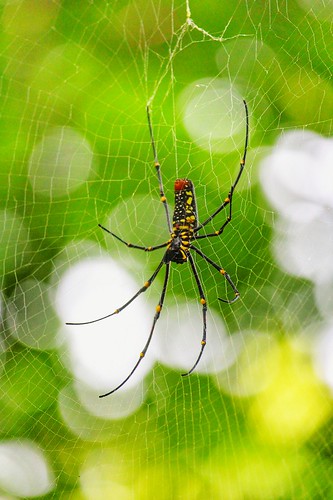Of nutrients in the aging process is also witnessed by overwhelming epidemiologic evidences that diet and nutrition can affect growth, the development of the body during childhood, the risk of acute and chronic diseases during adulthood, the maintenance of physiological processes and the biological process of aging [21,22,23,24,25,26,27,28,29,30,31,32,33,34,35,36,37,38]. In particular, diets rich in vegetables seem to be associated with a significant increase in longevity and wellness [23,39,40]. Inepidemiological studies it could be difficult to obtain, by elders,  reliable information on diet style in their early decades of life, which, likely, significantly influenced later health status. Since there are several indications that bitter taste gene polymorphisms can influence food choice [39,41,42,43,44,45], we considered of some interest to investigate the possible association between bitter taste and longevity. On the basis of these molecular, genetic and epidemiological data from the literature we hypothesized that genetic polymorphisms of taste receptors, which modulate food preferences but are also expressed in a number of organs and regulate food absorption and processing, could modulate the aging process. For example, the TAS2R38 gene is characterized by three non synonymous coding SNPs (rs713598 ?G145C, Ala49Pro; rs1726866 ?T785C, Val262Ala; rs10246939 ?A886G, Ile296Val) which give rise to several haplotypes [46]. Subjects possessing at least one copy of the PAV haplotype (i.e. the alleles coding for proline at rs713598, alanine at rs1726866 and valine at rs10246939) are significantly more responsive to the bitter tastants PROP, PTC, and chemically
reliable information on diet style in their early decades of life, which, likely, significantly influenced later health status. Since there are several indications that bitter taste gene polymorphisms can influence food choice [39,41,42,43,44,45], we considered of some interest to investigate the possible association between bitter taste and longevity. On the basis of these molecular, genetic and epidemiological data from the literature we hypothesized that genetic polymorphisms of taste receptors, which modulate food preferences but are also expressed in a number of organs and regulate food absorption and processing, could modulate the aging process. For example, the TAS2R38 gene is characterized by three non synonymous coding SNPs (rs713598 ?G145C, Ala49Pro; rs1726866 ?T785C, Val262Ala; rs10246939 ?A886G, Ile296Val) which give rise to several haplotypes [46]. Subjects possessing at least one copy of the PAV haplotype (i.e. the alleles coding for proline at rs713598, alanine at rs1726866 and valine at rs10246939) are significantly more responsive to the bitter tastants PROP, PTC, and chemically  similar compounds [47,48,49,50,51,52,53,54,55]. Such individuals display the so-called taster phenotype, and are distinct from those who are homozygous for the AVI haplotype and display the so-called non-taster phenotype. Tasters show a reduction in their intake of several vegetables such as cabbage, spinach, lettuce [56,57]. Given the importance of diet in longevity, genetic variation in taste Tubastatin A chemical information receptor could directly affect a healthy aging by modulating food preference during life.Taste ABBV 075 receptors SNPs and AgingOn the other hand, new evidence strongly 1081537 suggests that taste genes play a much broader role in human health. Genes of the TAS1R-TAS2R gene family express membrane taste receptors in the neuroendocrine cells of several organs of the gastrointestinal system [58]. These cells start the regulation of a variety of relevant functions, including appetite, satiety, the proliferation of epithelial GI cells, secretory activity of the stomach, liver and pancreas, intestine motility, and gall bladder contraction [59]. A strong correlation has been observed between polymorphic variants in various taste receptors and homeostasis of glucose and insulin [60], which in turn are strongly related with longevity [61]. Therefore allelic variants in the taste receptor family may be a link between ageing and glucose homeostasis. Moreover candidate gene studies on various traits have indicated suggestive associations between allelic variants in taste receptor genes and Body Mass Index (BMI) [34,62,63], complex diseases such as cancer [64], alcohol consumption [65], smoking [66] and nicotine dependence [67] although these associations did not emerge from genome-wide association studies on BMI and diabetes, at the highly stringent threshold that is typically used in such studies (p,1028). Recently it ha.Of nutrients in the aging process is also witnessed by overwhelming epidemiologic evidences that diet and nutrition can affect growth, the development of the body during childhood, the risk of acute and chronic diseases during adulthood, the maintenance of physiological processes and the biological process of aging [21,22,23,24,25,26,27,28,29,30,31,32,33,34,35,36,37,38]. In particular, diets rich in vegetables seem to be associated with a significant increase in longevity and wellness [23,39,40]. Inepidemiological studies it could be difficult to obtain, by elders, reliable information on diet style in their early decades of life, which, likely, significantly influenced later health status. Since there are several indications that bitter taste gene polymorphisms can influence food choice [39,41,42,43,44,45], we considered of some interest to investigate the possible association between bitter taste and longevity. On the basis of these molecular, genetic and epidemiological data from the literature we hypothesized that genetic polymorphisms of taste receptors, which modulate food preferences but are also expressed in a number of organs and regulate food absorption and processing, could modulate the aging process. For example, the TAS2R38 gene is characterized by three non synonymous coding SNPs (rs713598 ?G145C, Ala49Pro; rs1726866 ?T785C, Val262Ala; rs10246939 ?A886G, Ile296Val) which give rise to several haplotypes [46]. Subjects possessing at least one copy of the PAV haplotype (i.e. the alleles coding for proline at rs713598, alanine at rs1726866 and valine at rs10246939) are significantly more responsive to the bitter tastants PROP, PTC, and chemically similar compounds [47,48,49,50,51,52,53,54,55]. Such individuals display the so-called taster phenotype, and are distinct from those who are homozygous for the AVI haplotype and display the so-called non-taster phenotype. Tasters show a reduction in their intake of several vegetables such as cabbage, spinach, lettuce [56,57]. Given the importance of diet in longevity, genetic variation in taste receptor could directly affect a healthy aging by modulating food preference during life.Taste Receptors SNPs and AgingOn the other hand, new evidence strongly 1081537 suggests that taste genes play a much broader role in human health. Genes of the TAS1R-TAS2R gene family express membrane taste receptors in the neuroendocrine cells of several organs of the gastrointestinal system [58]. These cells start the regulation of a variety of relevant functions, including appetite, satiety, the proliferation of epithelial GI cells, secretory activity of the stomach, liver and pancreas, intestine motility, and gall bladder contraction [59]. A strong correlation has been observed between polymorphic variants in various taste receptors and homeostasis of glucose and insulin [60], which in turn are strongly related with longevity [61]. Therefore allelic variants in the taste receptor family may be a link between ageing and glucose homeostasis. Moreover candidate gene studies on various traits have indicated suggestive associations between allelic variants in taste receptor genes and Body Mass Index (BMI) [34,62,63], complex diseases such as cancer [64], alcohol consumption [65], smoking [66] and nicotine dependence [67] although these associations did not emerge from genome-wide association studies on BMI and diabetes, at the highly stringent threshold that is typically used in such studies (p,1028). Recently it ha.
similar compounds [47,48,49,50,51,52,53,54,55]. Such individuals display the so-called taster phenotype, and are distinct from those who are homozygous for the AVI haplotype and display the so-called non-taster phenotype. Tasters show a reduction in their intake of several vegetables such as cabbage, spinach, lettuce [56,57]. Given the importance of diet in longevity, genetic variation in taste Tubastatin A chemical information receptor could directly affect a healthy aging by modulating food preference during life.Taste ABBV 075 receptors SNPs and AgingOn the other hand, new evidence strongly 1081537 suggests that taste genes play a much broader role in human health. Genes of the TAS1R-TAS2R gene family express membrane taste receptors in the neuroendocrine cells of several organs of the gastrointestinal system [58]. These cells start the regulation of a variety of relevant functions, including appetite, satiety, the proliferation of epithelial GI cells, secretory activity of the stomach, liver and pancreas, intestine motility, and gall bladder contraction [59]. A strong correlation has been observed between polymorphic variants in various taste receptors and homeostasis of glucose and insulin [60], which in turn are strongly related with longevity [61]. Therefore allelic variants in the taste receptor family may be a link between ageing and glucose homeostasis. Moreover candidate gene studies on various traits have indicated suggestive associations between allelic variants in taste receptor genes and Body Mass Index (BMI) [34,62,63], complex diseases such as cancer [64], alcohol consumption [65], smoking [66] and nicotine dependence [67] although these associations did not emerge from genome-wide association studies on BMI and diabetes, at the highly stringent threshold that is typically used in such studies (p,1028). Recently it ha.Of nutrients in the aging process is also witnessed by overwhelming epidemiologic evidences that diet and nutrition can affect growth, the development of the body during childhood, the risk of acute and chronic diseases during adulthood, the maintenance of physiological processes and the biological process of aging [21,22,23,24,25,26,27,28,29,30,31,32,33,34,35,36,37,38]. In particular, diets rich in vegetables seem to be associated with a significant increase in longevity and wellness [23,39,40]. Inepidemiological studies it could be difficult to obtain, by elders, reliable information on diet style in their early decades of life, which, likely, significantly influenced later health status. Since there are several indications that bitter taste gene polymorphisms can influence food choice [39,41,42,43,44,45], we considered of some interest to investigate the possible association between bitter taste and longevity. On the basis of these molecular, genetic and epidemiological data from the literature we hypothesized that genetic polymorphisms of taste receptors, which modulate food preferences but are also expressed in a number of organs and regulate food absorption and processing, could modulate the aging process. For example, the TAS2R38 gene is characterized by three non synonymous coding SNPs (rs713598 ?G145C, Ala49Pro; rs1726866 ?T785C, Val262Ala; rs10246939 ?A886G, Ile296Val) which give rise to several haplotypes [46]. Subjects possessing at least one copy of the PAV haplotype (i.e. the alleles coding for proline at rs713598, alanine at rs1726866 and valine at rs10246939) are significantly more responsive to the bitter tastants PROP, PTC, and chemically similar compounds [47,48,49,50,51,52,53,54,55]. Such individuals display the so-called taster phenotype, and are distinct from those who are homozygous for the AVI haplotype and display the so-called non-taster phenotype. Tasters show a reduction in their intake of several vegetables such as cabbage, spinach, lettuce [56,57]. Given the importance of diet in longevity, genetic variation in taste receptor could directly affect a healthy aging by modulating food preference during life.Taste Receptors SNPs and AgingOn the other hand, new evidence strongly 1081537 suggests that taste genes play a much broader role in human health. Genes of the TAS1R-TAS2R gene family express membrane taste receptors in the neuroendocrine cells of several organs of the gastrointestinal system [58]. These cells start the regulation of a variety of relevant functions, including appetite, satiety, the proliferation of epithelial GI cells, secretory activity of the stomach, liver and pancreas, intestine motility, and gall bladder contraction [59]. A strong correlation has been observed between polymorphic variants in various taste receptors and homeostasis of glucose and insulin [60], which in turn are strongly related with longevity [61]. Therefore allelic variants in the taste receptor family may be a link between ageing and glucose homeostasis. Moreover candidate gene studies on various traits have indicated suggestive associations between allelic variants in taste receptor genes and Body Mass Index (BMI) [34,62,63], complex diseases such as cancer [64], alcohol consumption [65], smoking [66] and nicotine dependence [67] although these associations did not emerge from genome-wide association studies on BMI and diabetes, at the highly stringent threshold that is typically used in such studies (p,1028). Recently it ha.
